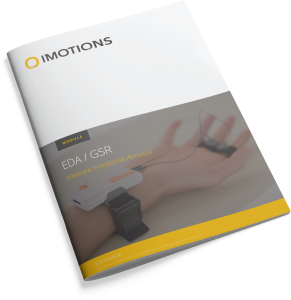There is no doubt that our lives are becoming more digital, reliant on interactive devices or digital services. One of the most significant changes observed in recent years is the large and growing number of people obtaining health information online, making it the most popular medium for obtaining health-related information. Online access to health information has the potential to educate and assist people about the nature, causes, prevention, and treatment of specific health conditions. Furthermore, access to online health information has the potential to increase the anxieties of people with little or no medical training, especially when used as a diagnostic procedure. This increases negative emotions among health information searchers. Regardless of the concerns raised about the impact of online health information on user emotions, a better understanding of identifying and improving user emotional states for online health information searches is required. A positive emotional state is an important factor in increasing personal satisfaction in humans. On the other hand, a negative emotional state can result in social or psychological well-being issues.
A novel research area called “Positive Technology” has emerged, which is a scientific and applied approach to designing technologies to improve human emotions and well-being. Positive technology combines Positive Psychology objectives with Information and Communication Technologies (ICTs) advancements. This research presents the methodological and applied approach to propose a positive search interface design by applying the Hedonic level approach. The proposed information search interface focused on designing and developing novel digital experiences that aim to promote positive changes through pleasure, meaning and engagement to improve emotions, health information search behaviour and well-being.
Online health information search tasks are used as the context for an experimental investigation. Three types of online health information search tasks (easy/happy, neutral, complex/difficult) are given to the participants (N = 25), students recruited from the University of Bedfordshire. The participants provided two information search interface designs for two experiments: the baseline search interface design (BSID), with a no-design approach, and the proposed positive search interface design (PSID) to perform three online health information search tasks.
A mixed-method approach is applied using physiological measures such as galvanic skin response (GSR) and eye-tracker and self-reporting. Results show that positive design helped improve users’ emotional intensity with improved visual attention compared to the baseline interface design results. The statistical analysis shows the significance difference observed for the positive affect with the proposed positive design. The statistical analysis shows the proposed positive design helped to improve pleasure and engagement in individuals, improved health information search behaviour in terms of online interaction and query reformulation, and improved health information search task performance and search process experience for easy/happy and complex tasks. No significance difference was observed for search process experience for the neutral task. A significance difference is observed for the query reformulations and change in query formulation behaviour. However, interface design has no effect on the website selection for online health information. Statistical results show significance differences in the well-being characteristics of CBT, such as thought processes, positive emotions and actions.
In contrast, no significance difference is observed for the well-being characteristics of behaviour and physical feelings. The future work includes combining multiple physiological measures to get a deeper understanding of the variety of emotional responses to interface designs. Also, a deeper understanding of health information search behaviours is required to investigate the impact of positive interface design on query change behaviour.

















